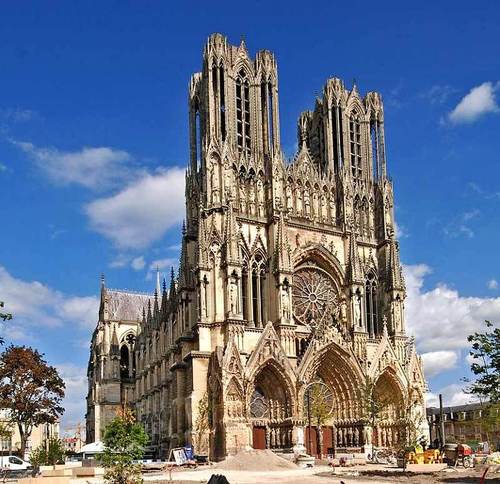France > Champagne
Champagne: a Region and a Wine
Champagne is one of the most famous wines in the world, and also one of the most misunderstood. First, Champagne is a place, a small patch of vineyard in the countryside of France, about 2 hours east of Paris. True Champagne (the wine) MUST come from Champagne (the place). Wines from elsewhere may be sparkling wines, or sparkling wines made by the Champagne Method, and may be wonderful, well-made wines… but they are NOT Champagne. The term is recognized worldwide (including, since 2005, by the US Government) as a term referring exclusively to wines produced by the classic method and coming from this small region of France.
Like all French “Appellations Controllees,” Champagne is a highly regulated wine classification that specifies everything from allowed grape types to specific vineyard terroirs, to pruning and viticultural practices, to the winemaking, to the final quality in the bottle. For new plantings, the allowed grapes are Chardonnay, Pinot Meunier and Pinot Noir. Legacy plantings of Arbanne, Petit Meslier, Pinot Blanc and Pinot Gris are allowed, but may not be increased. Together they make up some 1% of all Champagne vineyards.
The Districts
The Champagne region is spread across two Departements- the Marne and the Aube to the southeast. In the Aube, we find the Cote des Bar, which is best known for its Pinot Noir plantings. In the Marne, we find four subdistricts clustered about the Marne River and the city of Epernay, the capital of the Champagne industry. Nearby but not on the river is the city of Reims, political capital of the Departement and home of the great Cathedral, in which the Kings of France were anointed as rulers for nearly a thousand years. Along the river itself is the Vallee de la Marne. Just to the north is the large massif of the Montagne de Reims (Reims is tucked around on the other side of the mountain), famed for its powerful, long-lived wines. To the south of the river is the long winding slope of the Cote des Blancs, and to the west of that, the Cote de Sezanne, both highly regarded for their elegant Chardonnay based Champagnes.
The Methode Champenoise
Today legally termed the Methode Traditionelle, this is the core technique for production of the world’s great sparkling wines. It starts out as traditional winemaking- grapes are harvested and crushed, yeast is added, and the juice is left to ferment, converting the sugars into alcohol and resulting in a dry, still (non-sparkling) wine. For table wines, this is the end- the wines rest, may be filtered or fined, and are then bottled. For Champagnes, it is just the beginning. The wines are then carefully blended across multiple vintages (typically a young “base” wine is modified by the addition of multiple vintages of “reserve” wine), and then bottled. Immediately after bottling, a touch more unfermented juice (“dosage de fermentation”) and more yeast are added and the bottle is sealed. The added juice ferments, and the CO2 that is produced, unable to escape, provides the carbonation. The wine is now sparkling, and again fermented to bone dry. The next step is to work the bottle to slowly get the dead yeasts down to the cork end of the bottle, then quickly remove the cork, eject the sediment, top up the bottle (from another bottle), add the final sweetness adjustment (the “Dosage d’Expedition”) and recork the bottle. Most Champagnes are then aged in bottle for one or several years before release.
Grower vs Negociant Champagnes
Unlike most wine regions, there is a long tradition of blending in Champagne- both blending vintages to produce the typical NV Brut and Extra Dry wines of the region, but also blending of fruit from many different vineyard sources to craft a “house style.” The business has been historically dominated by large “Negociant” houses (Taittinger, Moet, Perrier-Jouet etc) as well as large cooperatives (Nicolas Feuillatte is the largest). Vignerons (Recoltants, growers) historically sold their fruit to these large Houses for use in their blends. More recently, an increasing number of growers have begun to vinify their own fruit and bottle their own wines, from their own small vineyards. These wines are able to express the unique terroir owned by each grower, and have allowed the creation of a great range of distinctive and stylish wines. In contrast to the Negociants who produce millions of bottles annually, growers are typically in the 50,000 to 250,000 bottle range. Our portfolio of growers ranges from around 100,000 bottles annually, down to a mere 3,000 bottles (yes, about 300 cases) annual production. We invite you to explore and enjoy these beautiful wines, some of the true pinnacles of the winemaker’s art.



